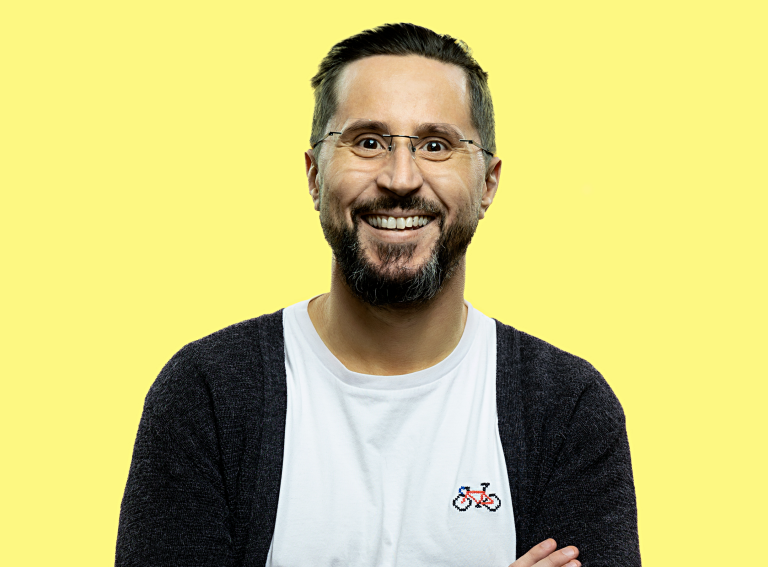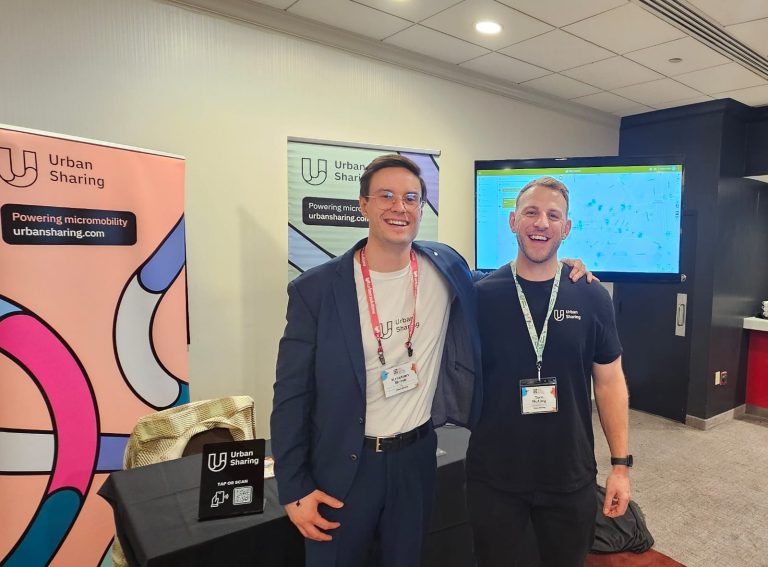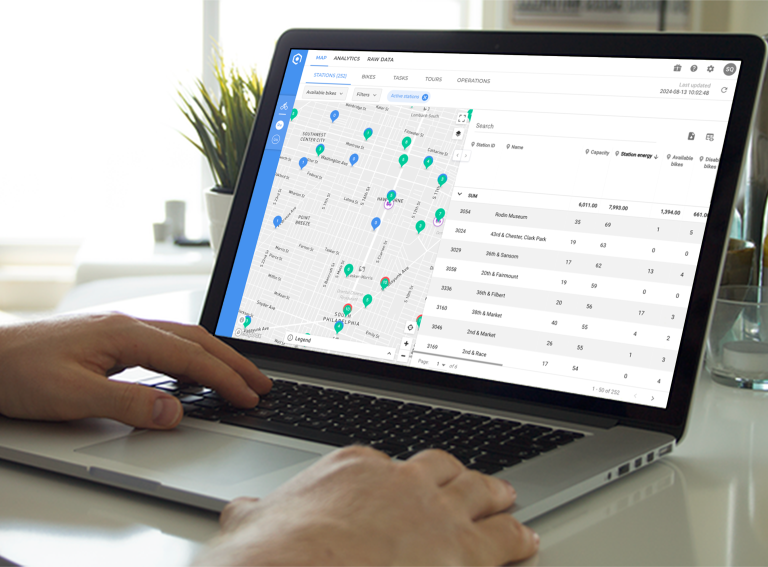Antonio Loro has developed a new mobility form factor for last mile delivery, combining comfort, cargo space and compactness, all in one.
Known as the utility scooter, it is the first venture for Loro’s Vancouver-based company Scootility and currently stands as two prototypes built for early testing.
“The utility scooter capitalises on an overlooked gap in the market,” says the Founder. “It can haul a bigger payload than an e-bike or e-moped but is more compact and agile than an e-cargo bike or van.”
Engineered for rapid deliveries
With a cargo capacity of 80 kilograms, swappable batteries, a weatherproof swappable cargo box to increase uptime, and an organiser compartment, the utility scooter is designed with delivery at its forefront.
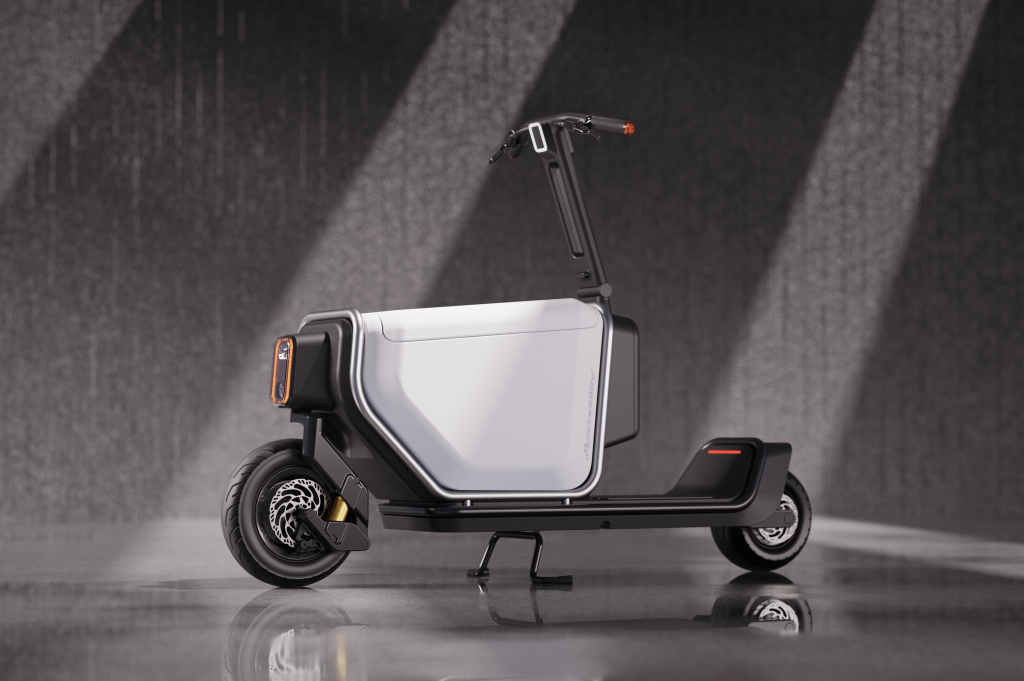
Its low centre of gravity and full suspension offers both stability and comfort. A folding steering column means the scooter can be compactly stored, while cable steering gives it a small turning radius for manoeuvring in and out of tight parking spaces or congested sidewalks.
“For a vehicle with that much cargo capacity, the utility scooter is remarkably compact,” Antonio says. “It’s hard enough to find a micromobility vehicle that performs in both of these areas, but it’s an even tougher challenge for a vehicle to do so while offering a great ride.”
For added stability, the e-scooter comes equipped with a leg rest, and its multiple lighting system ensures the rider can see and be seen.
The utility scooter is aimed at food and parcel delivery, campuses, service provider technicians, emergency responders in congested urban environments, and a wide range of other use cases in corporate and institutional fleets.
Cracking the aesthetic
With a background in urban planning, Antonio has brought in Dutch mobility design studio Springtime Design and Canadian firm Engineering Design Lab (EDL), where the scooter will be translated into the final product.
They are responsible for making the e-scooter appeal to both investors and customers.
“Every design comes from a spark,” says Springtime Design’s Founder John Kock.
“It’s the things you see around you. At a certain point it all clicks, and then you know what needs to be done.”
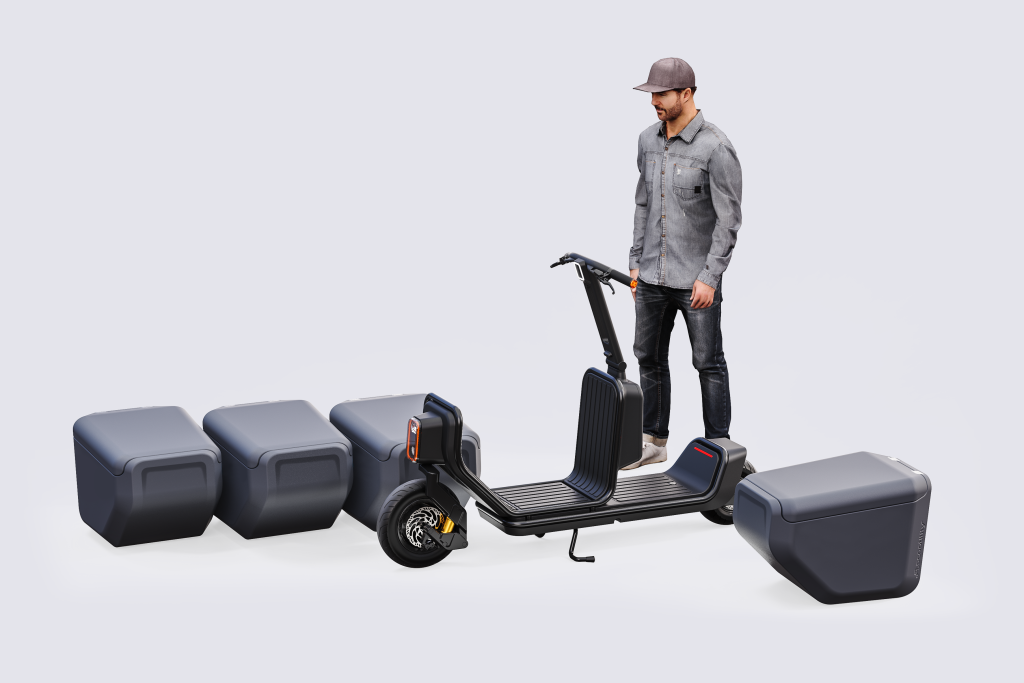

It’s not just about creating a sleek look, John says, but making the e-scooter the epitome of professionalism.
“It requires rethinking from the ground up, considering business-related aspects like total cost of ownership and up-time,” he tells Zag.
“Aesthetics however do matter. Scootility will be a branded vehicle that will be very visible in the city. It will express the quality of the service the brand is providing. And at the same time it acknowledges the value of its workforce by offering their riders a dedicated professional tool.”
Having founded his Dutch design firm over 25 years ago and taking last-mile logistics solutions all the way back to 1999, John’s hands are a safe pair for Antonio’s creation.
‘The works-like looks-like prototype’
For Engineering Design Lab’s Founder Tomek Bartczak, the work has just begun.
“Our role as the engineering integrators will be to take Antonio’s proof of concept and Springtime’s industrial design and marry those two ideas together into the next stage of the prototype – what we call the works-like looks-like prototype. This has all the functions, features, and aesthetics of the final product,” he says.
Founded in 2016, EDL is a Toronto-based engineering and design company specialising in micromobility and multimodal design.
“Given the resources we have at our disposal, it’s a matter of how to use them most efficiently in terms of money and time to create prototypes which get additional funding on board. Then we can launch the mass production of these vehicles.”
The trio expect the utility scooter to move into the production phase approximately 12 months from the point of raising seed funding.
“The micromobility space is really growing,” Tomek says. “All of the societal needs, science and technology have come together to create this moment right now where there’s tremendous opportunity for growth for those vehicles that get it right. Scootility’s utility scooter could be one of those vehicles because it’s creating a new niche.”
For Antonio, creating that niche requires tapping the strengths of his product development partners. “We know from conversations with delivery companies and other fleet operators that the utility scooter is needed. The key for us is to execute our vision well, and the fastest and most reliable way to do that is to collaborate with proven experts like Springtime and EDL.”



